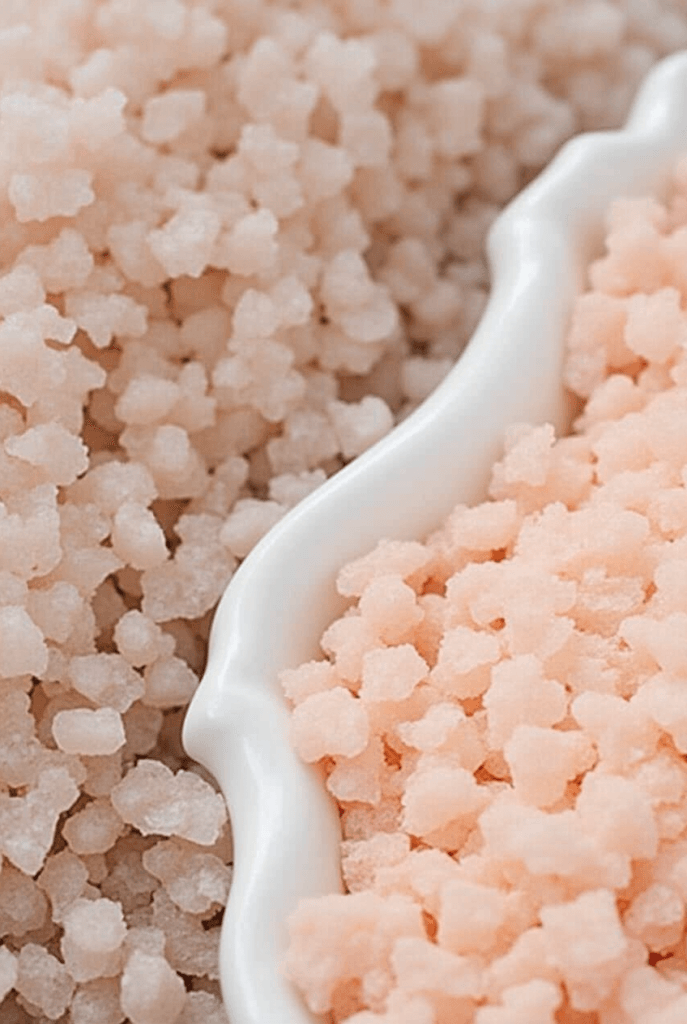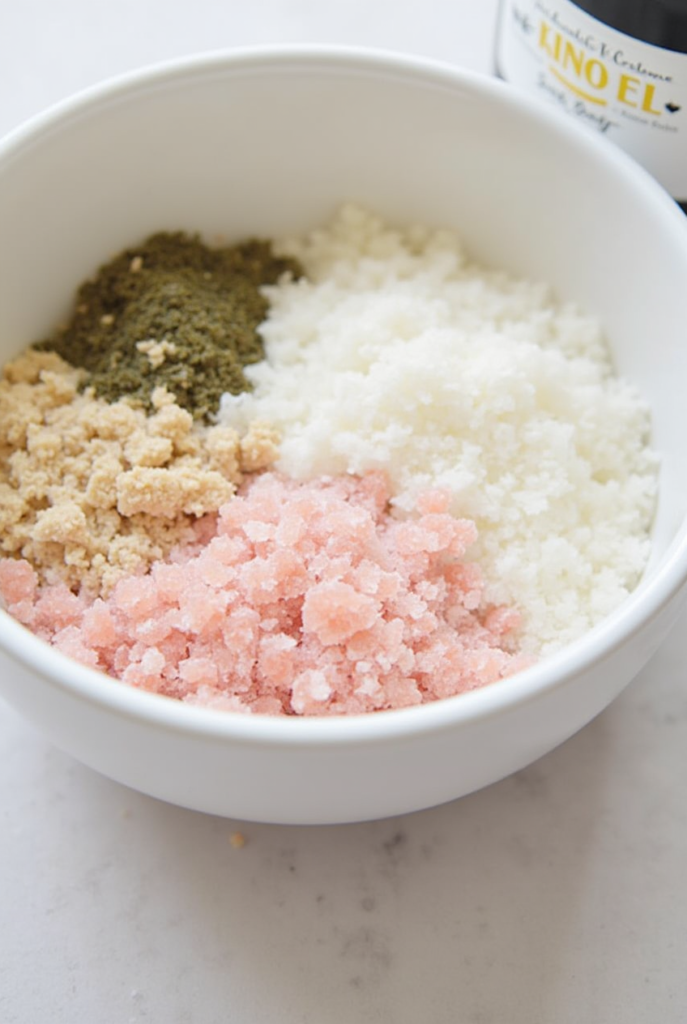Salt is more than just a seasoning it’s a story, a science, and for many, a symbol of purity and wellness. Among the many types gracing kitchen shelves and spa counters, pink Tibetan salt has gained quite the following. But is it truly different from its Himalayan cousin? What makes it pink, and does it live up to the hype when it comes to health, flavor, or even skincare?
In this deep dive, we’ll uncover everything from its origin story to health claims, kitchen uses, and even the myths that swirl around this blush-toned crystal. Whether you’re a curious foodie, wellness enthusiast, or just someone looking to make healthier choices, this guide will give you a full-bodied understanding of pink Tibetan salt. Let’s dive in.
What is Pink Tibetan Salt?
Origins and Composition of Pink Tibetan Salt
Pink Tibetan salt hails from the ancient, mineral-rich salt beds nestled high in the Himalayas, particularly near the Tibetan Plateau. Formed over millions of years, these crystalline structures are thought to be remnants of primordial oceans long gone. Thanks to tectonic activity and minimal human interference, the salt retains a rich cocktail of natural minerals.
So, what’s in this pretty pink stuff? Besides sodium chloride the same base found in regular table salt pink Tibetan salt includes up to 84 trace minerals, like magnesium, calcium, iron, and potassium. These are the very minerals that give it its characteristic pink hue, varying from soft blush to deeper coral tones. This natural pigmentation isn’t just eye candy; it’s also tied to the salt’s supposed health benefits.
Difference Between Himalayan and Tibetan Pink Salt

At first glance, Tibetan pink salt and Himalayan pink salt seem interchangeable and to be fair, they’re closely related. But here’s the thing: while both are mined from regions around the Himalayas, Tibetan salt is often sourced from higher-altitude plains with less commercial mining activity. It’s less processed and often hand-harvested using traditional methods, making it a favorite among purists.
Himalayan salt, especially the kind exported in bulk, may undergo more refinement and mechanical extraction. This difference, though subtle, has sparked debates in the wellness world about purity, energy, and environmental impact. That said, both salts share similar mineral profiles, taste, and appearance. So, unless you’re a salt sommelier, the distinction may feel more philosophical than functional.
How It’s Mined and Processed
Mining pink Tibetan salt is nothing like industrial salt production. Forget giant machines and chemical treatments. Instead, this salt is typically hand-extracted, sun-dried, and crushed with minimal refinement. The process is as close to nature as it gets, preserving its mineral richness and crystal structure.
This low-impact method not only maintains the salt’s purity but also aligns with sustainable and ethical sourcing practices. That’s a big win for eco-conscious consumers looking to reduce their carbon and chemical footprints.
Health Benefits of Pink Tibetan Salt
Rich Mineral Content and Its Role in the Body
It’s no secret that our bodies need more than just sodium. That’s where pink Tibetan salt stands out. Unlike plain table salt, which is stripped down and often bleached, this natural salt contains over 80 trace minerals. These include iron, potassium, magnesium, and calcium—all essential for basic body functions.
These minerals don’t just sound fancy; they play real roles. For example, magnesium supports muscle function, iron helps carry oxygen in your blood, and calcium strengthens bones. While the amounts in pink Tibetan salt are small, they can still make a difference when added to a balanced diet.
Moreover, the salt’s unrefined nature means it isn’t loaded with additives like anti-caking agents, making it a cleaner alternative. That’s a win for anyone trying to reduce chemical intake from food sources.
Electrolyte Balance and Hydration Support
Ever felt drained after a workout? That’s usually due to lost electrolytes. Luckily, pink Tibetan salt offers a natural way to help replenish them. The combination of sodium and trace minerals makes it useful in homemade electrolyte drinks. It’s a simple and natural method to boost hydration without resorting to sugar-packed sports drinks.
In fact, many wellness circles swear by adding a pinch of pink salt to a glass of lemon water in the morning. Why? It’s believed to help kick-start hydration, balance pH levels, and energize your system before caffeine kicks in.
Alkalizing Effects and pH Regulation
One of the lesser-known benefits of pink Tibetan salt is its potential to help balance the body’s pH. Though still debated in the medical world, some studies and holistic practitioners argue that unrefined salts can reduce acidity in the body.
Too much acid in the system is linked to fatigue, inflammation, and other health issues. Since pink salt contains alkaline minerals, it may help counteract acidic foods and stressors, giving your internal systems a slight edge toward balance.
So, while it’s not a miracle cure, pink Tibetan salt can be a valuable part of a wellness-focused lifestyle.
Culinary Uses of Pink Tibetan Salt
Why Chefs Prefer Pink Salt for Cooking and Finishing
Cooking isn’t just about flavor it’s about texture, color, and aroma. And that’s where pink Tibetan salt brings something special to the table. Its subtle mineral flavor adds depth without overpowering dishes, making it a go-to for gourmet chefs and home cooks alike.
Unlike table salt, which can taste a bit sharp or metallic, pink salt has a milder, earthy note. This makes it perfect for seasoning delicate foods like grilled fish, roasted veggies, or even desserts like salted dark chocolate.
Another win? The coarse grains offer a satisfying crunch when sprinkled over dishes right before serving. That “finishing salt” effect enhances both taste and presentation impressing guests with minimal effort.
Recipes and Food Pairings Featuring Pink Salt

From savory to sweet, pink Tibetan salt shines in countless recipes. Want to keep it simple? Try it on fresh avocado toast or a soft-boiled egg. Its mineral tang adds a rich contrast that elevates the entire dish.
Looking to impress? Use it as a crust for baking meats like a salt-baked salmon or rim the glass of a grapefruit margarita for a subtle, earthy twist.
For the health-conscious, sprinkle it over roasted nuts or use it in homemade salad dressings for a cleaner seasoning option. And for those who love baking, a pinch of pink salt in cookies or brownies can make the chocolate flavors pop.
Bottom line: Pink Tibetan salt doesn’t just sit in your spice rack it earns its place on the plate.
Wellness and Beauty Applications
Bath Soaks and Skin Detoxification with Pink Tibetan Salt
When you think of salt, a bath might not be the first thing that comes to mind but it should be. Pink Tibetan salt isn’t just for your plate; it also plays a starring role in many wellness rituals. Thanks to its mineral content, it’s become a staple in detox baths.
Adding a handful to warm water can help draw out toxins, soothe sore muscles, and even relax your mind after a long day. The trace elements like magnesium and potassium may improve circulation and reduce inflammation. People with dry or itchy skin often report smoother, calmer skin after regular soaks.
And let’s be real it’s not just about the science. The gentle pink hue and earthy aroma create a spa-like experience at home. Who doesn’t love that?
If you’re interested in pink salt detox recipes, check out the Pink Salt Weight Loss Recipe on ChefFeRecipes for a simple, holistic way to incorporate it into your daily routine.
DIY Scrubs and Spa Treatments Using Pink Salt
Here’s another treat: pink Tibetan salt makes a killer exfoliant. Mix it with coconut oil or honey and you’ve got yourself a powerful DIY body scrub. The coarse texture sloughs off dead skin cells, while the minerals feed your skin with a boost of nutrients.
You can also use it in scalp treatments or foot scrubs. Its natural antibacterial properties may help with acne or irritation plus, it’s a lot cheaper than store-bought spa products.
Using it this way means you’re avoiding chemical-filled beauty products and going all-natural. That’s good for your body and your wallet.
Is Pink Tibetan Salt Really Better?
Comparing Nutritional Value to Table Salt
So, here’s the million-dollar question: Is pink Tibetan salt really better than regular table salt? The answer? It depends on what you value.
In terms of basic sodium content, both types are similar. So if you’re watching your sodium for blood pressure or heart health, don’t think one is dramatically “healthier” than the other. But the difference lies in the extra minerals found in pink Tibetan salt, which processed table salt just doesn’t have.
Table salt often contains additives like anti-caking agents or iodine, which some people prefer to avoid. On the flip side, pink salt is unrefined and less processed making it a top pick for those seeking natural, whole-food ingredients.
Debunking Common Myths and Marketing Claims
Let’s bust a few myths. No, pink Tibetan salt doesn’t cure disease, balance all your hormones, or work miracles. Some of those claims are a bit overblown.
That said, it does offer a cleaner alternative with trace minerals, and it supports wellness in a more holistic, lifestyle-oriented way. So while it won’t replace your multivitamin or medication, it can complement a health-focused routine if used in moderation.
Don’t buy into the hype, but don’t write it off either. Like most good things, it’s best appreciated in balance.
Environmental and Ethical Considerations
Sustainable Mining Practices
Not all salts are created or mined equally. Thankfully, pink Tibetan salt is often sourced using more traditional and sustainable methods. Instead of blasting the earth with machines, many Tibetan salt mines still rely on hand-harvesting techniques. These age-old practices help preserve the surrounding environment and keep the salt close to its natural state.
Because it’s mined from ancient sea beds, there’s little need for modern intervention or harsh chemicals. As a result, the carbon footprint is typically lower compared to large-scale salt refineries. That’s a big plus for eco-conscious buyers looking to make cleaner, greener choices.
Still, it’s important to check where and how the salt is sourced. Some suppliers might use the term “Tibetan” loosely, so it pays to dig a little deeper or better yet, buy from certified ethical brands.
Fair Trade and Labor Issues in Salt Harvesting
While the salt might look pure, the labor behind it doesn’t always match. That’s why fair trade practices matter. Supporting brands that pay fair wages and offer safe working conditions ensures that your purchase does more good than harm.
Because pink Tibetan salt is often sourced from rural areas, ethical sourcing can directly impact local communities. Choosing fair trade-certified products helps maintain these jobs, protect workers, and promote long-term sustainability.
Buying with a conscience doesn’t cost much more but it pays off in real value.
Buying Guide and Storage Tips
How to Choose Authentic Pink Tibetan Salt
With so many salts on the shelf, how do you know you’re getting the real deal? Start with the basics. Authentic pink Tibetan salt usually comes in coarse or fine crystals and ranges in color from light pink to deep rose. If the color looks overly bright or artificial, it might be dyed or not the real thing.
Always check the label for sourcing information. Look for terms like “hand-harvested,” “non-GMO,” and “from the Tibetan Plateau.” These are strong indicators of quality. Also, skip brands that list additives or anti-caking agents. The beauty of this salt is in its unrefined, mineral-rich form.
And remember: just because it says “Himalayan” doesn’t mean it’s from Tibet. While similar, they’re not exactly the same, so read labels carefully.
Storage Methods for Long-Term Freshness
Storing pink Tibetan salt is pretty simple, but a few tips can make it last even longer. First, keep it in an airtight container preferably glass or ceramic. These materials prevent moisture from seeping in, which could cause clumping or reduce mineral quality.
Also, store it in a cool, dry place away from direct sunlight. Unlike regular table salt, this one doesn’t have preservatives, so it deserves a little extra care.
With the right storage, your pink salt can stay fresh, flavorful, and beneficial for years to come.
FAQs
What is fine Himalayan pink salt used for?
Fine Himalayan pink salt is used mainly for cooking and seasoning food. Because it dissolves quickly, it’s ideal for baking, sprinkling on salads, or mixing into soups and sauces. Moreover, many people choose it for its mild mineral flavor and clean finish. Additionally, it’s often used in homemade electrolyte drinks and even some beauty scrubs.
Who should not use pink salt?
While pink salt has a clean, natural profile, not everyone should use it freely. Specifically, people with kidney issues, high blood pressure, or those on a low-sodium diet should use it cautiously. Despite its trace minerals, it still contains sodium so overconsumption may pose risks. Therefore, it’s always wise to check with a doctor before making it a daily habit.
Which country has the best pink salt?
Although several regions mine pink salt, Pakistan especially the Khewra Salt Mine is known for producing the highest quality. This region sits at the base of the Himalayas and has supplied rich, mineral-packed salt for centuries. Additionally, smaller batches from Tibet and nearby areas are also prized for their purity and traditional harvesting methods.
Can you drink Himalayan pink salt every day?
Yes, but only in small amounts and with care. Many wellness enthusiasts add a pinch of Himalayan pink salt to water for hydration or mineral support. However, it’s crucial not to overdo it. Even though it’s more natural than table salt, daily intake should stay within safe sodium limits. As always, moderation is key and if you have health conditions, consult your doctor first.

